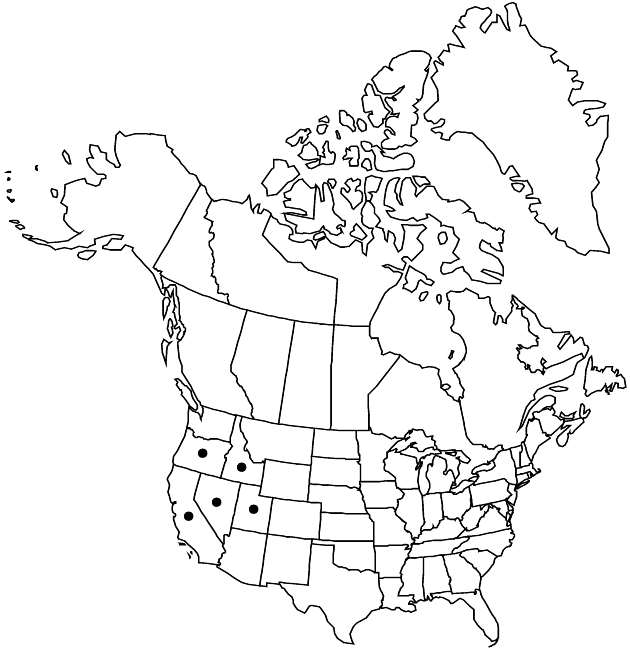Difference between revisions of "Townsendia scapigera"
in S. Watson, Botany (Fortieth Parallel), 145, plate 17, figs. 1–7. 1871.
FNA>Volume Importer |
FNA>Volume Importer |
||
| Line 46: | Line 46: | ||
|publication year=1871 | |publication year=1871 | ||
|special status= | |special status= | ||
| − | |source xml=https://jpend@bitbucket.org/aafc-mbb/fna-data-curation.git/src/ | + | |source xml=https://jpend@bitbucket.org/aafc-mbb/fna-data-curation.git/src/f50eec43f223ca0e34566be0b046453a0960e173/coarse_grained_fna_xml/V19-20-21/V20_443.xml |
|tribe=Asteraceae tribe Astereae | |tribe=Asteraceae tribe Astereae | ||
|genus=Townsendia | |genus=Townsendia | ||
Revision as of 20:28, 16 December 2019
(Biennials) perennials, 3–5(–12+) cm (usually ± pulvinate). Stems ± erect; internodes 0.1–1 mm, ± strigose. Leaves basal and cauline, blades ± spatulate to oblanceolate, 15–30(–70) × 2–5(–9) mm, not fleshy, faces ± strigose. Heads on scapiform peduncles 30–60(–120) mm. Involucres ± campanulate, 12–20(–32) mm diam. Phyllaries 16–32+ in 3–4+ series, the longer ± lanceolate, (7–)9–13 mm (l/w = 3–5), apices acute, abaxial faces piloso-strigose to strigose. Ray florets 18–35; corollas white adaxially, laminae 7–16 mm, glandular-puberulent abaxially. Disc florets 40–100+; corollas 3.5–5.5 mm. Cypselae 4–5.5 mm, faces hairy, hair tips forked or entire; pappi persistent; on ray cypselae 20–30+ subulate to setiform scales 3–6+ mm; on disc cypselae 20–30 subulate to setiform scales 5–7+ mm.
Phenology: Flowering May–Jul(–Aug).
Habitat: Openings in sagebrush
Elevation: 1400–3400 m
Distribution

Calif., Idaho, Nev., Oreg., Utah.
Discussion
Plants that key here and have peduncles 5–15+ mm (sporting smaller heads, fewer ray florets, and smaller cypselae than are characteristic of Townsendia scapigera) may belong to T. jonesii (which see). Plants included here in T. scapigera from Sweetwater Mountains, California, with relatively large heads and high numbers of florets were identified on their labels (e.g., DeDecker 3928, RSA) as T. parryi, a species not known to occur in California.
Selected References
None.